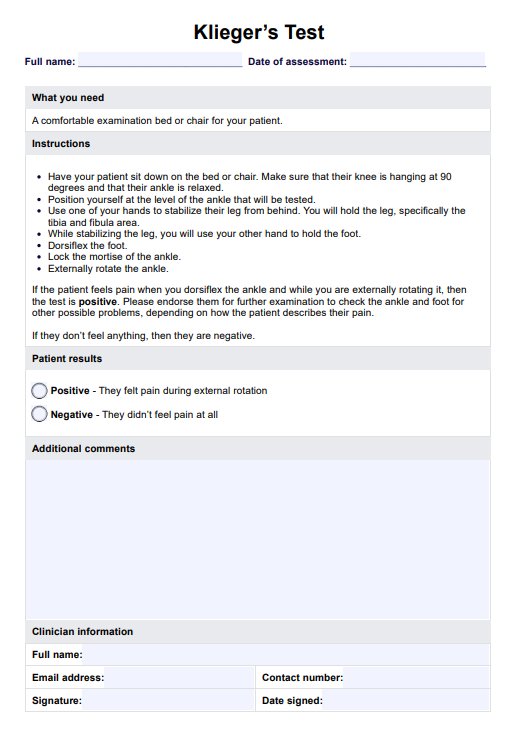Kleiger's Test is reliable for assessing ankle sprains when used as a comprehensive examination.

Kleiger’s Test
If you have a patient complaining of ankle pain, you can perform the Kleiger’s Test to see if their problem is a medial ankle sprain! Learn more about the test from this guide.
Use Template
Kleiger’s Test Template
Commonly asked questions
The Kleiger's Test may cause discomfort, particularly if the patient has an ankle sprain, but it should not be excruciating when performed correctly.
Kleiger's Test should be performed by trained healthcare professionals familiar with musculoskeletal assessments, and stress tests should not be conducted on anyone without proper expertise.
EHR and practice management software
Get started for free
*No credit card required
Free
$0/usd
Unlimited clients
Telehealth
1GB of storage
Client portal text
Automated billing and online payments











